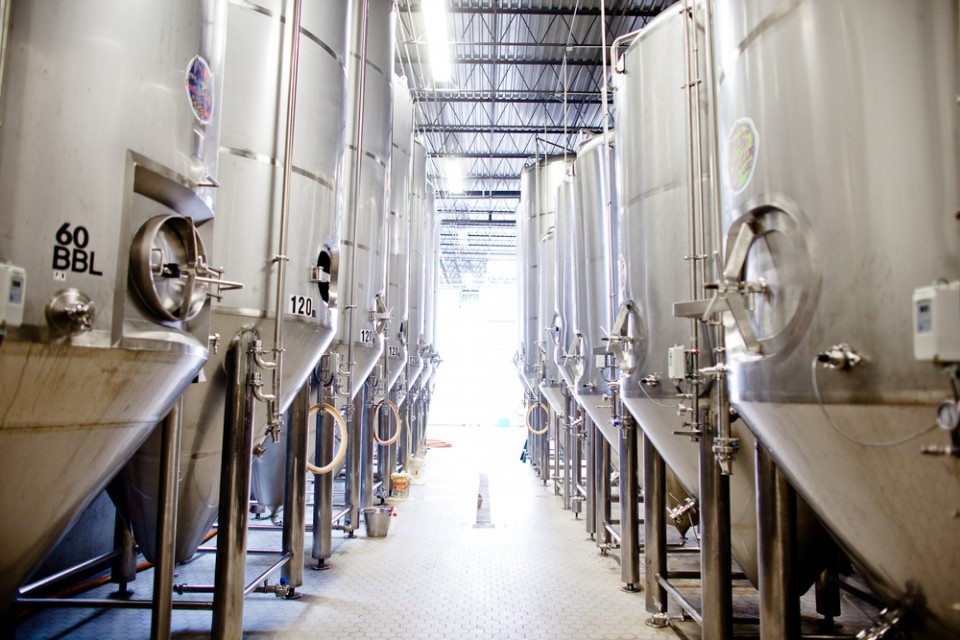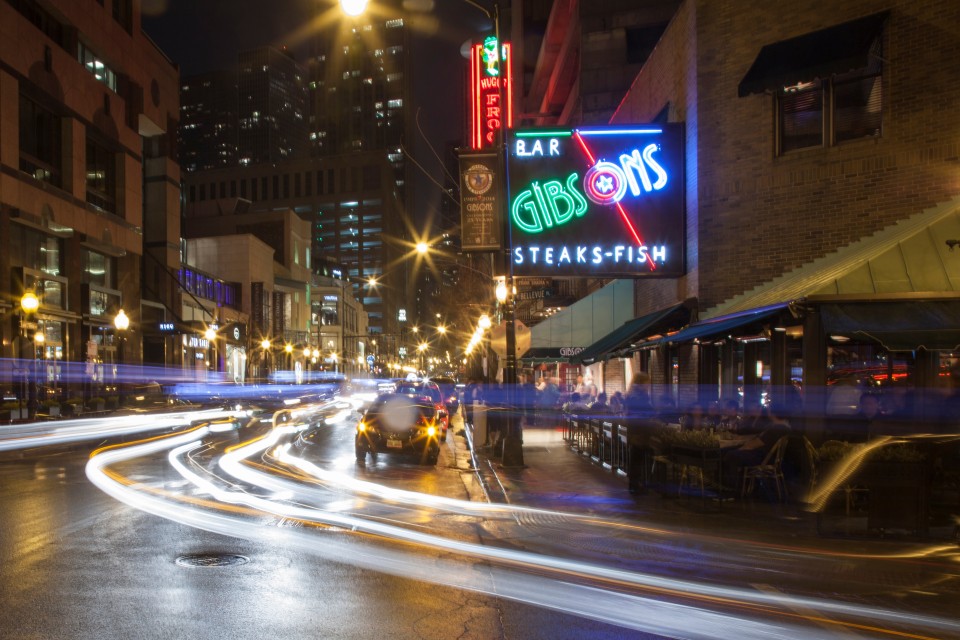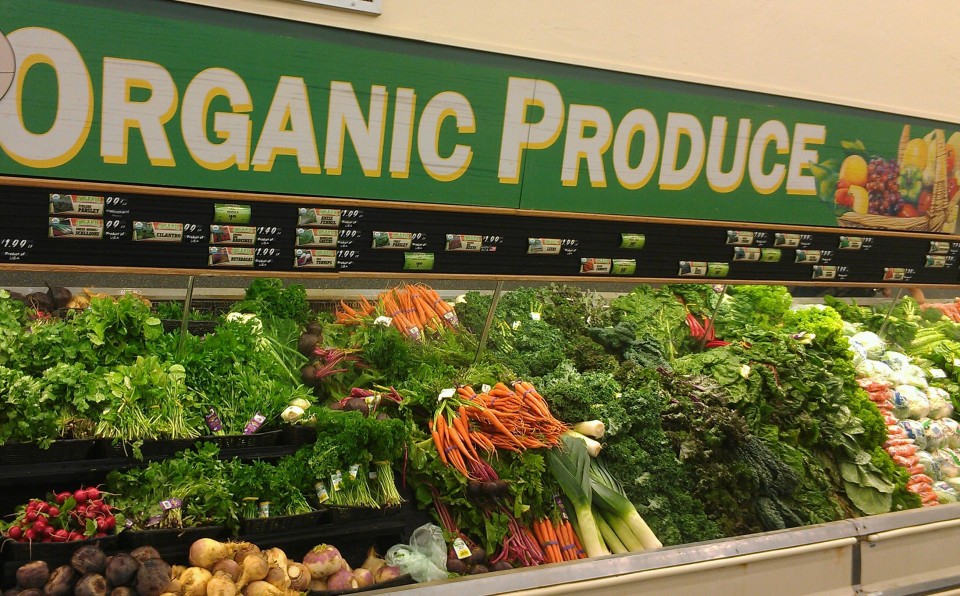
Aug 24, 2018
Ashok Selvam | Eater Chicago | August 21, 2018
The surge in brewery taproom openings in Chicago may delight typical beer drinkers, but they pose a threat to some bars which are seeing fewer customers. Several popular Chicago craft beer owners are voicing concerns over a law passed last week that they say will pose bigger challenges to their businesses. Last week, Governor Bruce Rauner lifted restrictions that prevented larger breweries from serving beer and cider from other companies at their facilities. Now companies like Half Acre Beer Company and Revolution Brewing will be able to pour beers from other brewers if they want.
While Springfield lauded the law for providing consumers with more choices, bar owners said the law creates an uneven playing field. The law further dissolves the line between taproom and bar by eliminating one of a bar’s competitive advantages. A bar still can sell wine and spirits, unlike a taproom.
Michael Roper, owner of Hopleaf — one of the city’s best craft beer bars — told Brewbound that taprooms are already taking customers away from his Andersonville icon. They’ve reportedly hurt other craft beer bars, too. The bigger companies, like Constellation Brands-owned Ballast Point Brewing (which earlier this year opened its first Chicago location), have a “have a leg up on traditional taverns and bars.” Roper said they can’t compete against the big guys who can lobby lawmakers. These brewers already enjoy high-profit margins from selling their own beers at their taprooms.
CONTINUE READING

Aug 17, 2018
Colman Andrews | USA Today | August 9, 2018
The restaurant business is a tough one. The average lifespan of a restaurant is five years and by some estimates, up to 90 percent of new ones fail within the first year. There are, however, some very successful exceptions that manage to rake in millions of dollars a year.
24/7 Wall Street reviewed food service trade publication Restaurant Business’s latest annual ranking of the top 100 independent restaurants in America, which is based on their reported or estimated gross food and beverage sales for the year. They define independents, for the survey’s purposes, as restaurants with no more than five locations. Fewer than a dozen of the places on this list are single-operator restaurants.
The most recent Restaurant Business rankings, sponsored by Campbell’s, were published late last year, based on figures from 2016. The shuttering in late July of one of their top 50 establishments, Carnevino (No. 23), due to sexual misconduct allegations, inspired us to take a new look at the list. In the course of doing that, we discovered that two other restaurants in the top 50 have also closed since the list was published. There’s no indication that these two went out of business for financial reasons, but the fact that even restaurants that are phenomenally successful can close might serve as a reminder that sales and profits are not the same thing.
Perusal of this list reveals a few interesting facts. First, American diners are obviously carnivorous, as 16 of the top 50 are steakhouses or focus strongly on meat. Second, though Los Angeles has been getting much publicity lately as the country’s new food capital, it shows poorly on the list of top grossing restaurants, with only one restaurant making the cut. New York City, on the other hand, accounts for 20 of the 50. Next in line are Las Vegas, Chicago and vicinity, and Washington, D.C. Finally, celebrity chefdom apparently doesn’t mean very much when it comes to serious financial success. Only half a dozen of these highly grossing restaurants have or had famed culinary personalities attached. Two of those are among the places that have since closed, and two more are no longer associated with the noted names.
Some of the restaurants on this list serve breakfast (and brunch), lunch, and dinner, while others are open only in the evenings; many are open seven days a week, while others might close for a day or two. These factors obviously influence the number of meals served annually. The restaurant industry usually computes “average check” (or “check average”) by dividing total sales by number of those meals. In some instances in this list, the math doesn’t work out, but that’s most likely because the restaurants in question (especially those with nightclubs and/or large bars or lounges) racked up substantial sales from alcohol unaccompanied by meals.
10. Gibsons Bar & Steakhouse
- Location: Chicago, Illinois
- Annual sales: $24,700,825
- Avg. check: $75
- Meals served annually: 363,301
9. Bryant Park Grill & Cafe
- Location: New York, NY
- Annual sales: $25,400,000
- Avg. check: $50 (est.)
- Meals served annually: 420,000
8. Smith & Wollensky
- Location: New York, N.Y.
- Annual sales: $25,961,337
- Avg. check: $100
- Meals served annually: 296,723
7. Lavo New York
- Location: New York, N.Y.
- Annual sales: $26,822,655
- Avg. check: $85
- Meals served annually: 200,000
6. The Boathouse Orlando
- Location: Orlando, Florida
- Annual sales: $30,814,369
- Avg. check: $43
- Meals served annually: 643,829
5. Old Ebbitt Grill
- Location: Washington, D.C.
- Annual sales: $32,662,051
- Avg. check: $39
- Meals served annually: 1,072,293
4. Carmine’s (New York)
- Location: New York, N.Y.
- Annual sales: $33,147,017
- Avg. check: $33
- Meals served annually: 396,871
3. Tao Downtown
- Location: New York, N.Y.
- Annual sales: $33,401,819
- Avg. check: $95
- Meals served annually: 311,945
2. Joe’s Stone Crab
- Location: Miami Beach, Florida
- Annual sales: $37,243,159
- Avg. check: $80
- Meals served annually: 316,000
1. Tao Las Vegas
- Location: Las Vegas, Nevada
- Annual sales: $42,470,345
- Avg. check: $90
- Meals served annually: 226,146

Aug 10, 2018
Patrick Wartan | Taft Stettinius & Hollister | August 10, 2018
On Aug. 2, Illinois Governor Bruce Rauner signed into law Public Act 100-0663 , which amends the Liquor Control Act and gives local governments the flexibility to grant liquor licenses for locations that are within 100 feet of any church, school, hospital, home foraged or indigent persons or for veterans. Under the new Act, local liquor control commissioners are authorized to grant exemptions to the current minimum distance requirements if the municipality adopts a local rule or ordinance authorizing the exemptions.
Prior to Public Act 100-0663, state liquor licenses were generally unavailable for locations within the minimum distance requirements, which prevented retailers from selling liquor in locations otherwise suited for such commercial activity. If a liquor establishment was within the minimum distance requirement, its remedy was to seek a special legislative exemption from the Illinois General Assembly, which can be a costly and burdensome process.
While the new law does not eliminate the state’s minimum distance requirement, it does grant municipalities the authority to waive the requirement, subsequently allowing liquor license applicants to receive an exemption without special legislation. Now, local liquor control commissioners may grant an exemption if a local rule or ordinance authorizes the local liquor control commissioner to do so.
Opening a liquor establishment near a church, school, hospital, home for aged or indigent persons or for veterans has been traditionally viewed as, at worst, impossible, and at best, an overly complicated immense time drain. Public Act 100-0663 is a significant step in streamlining the process. Only time will tell how this newfound flexibility will work as Chicago and other municipalities draft exemptions.
If you have questions about Public Act 100-0663, contact Patrick Wartan or a member of Taft’s Food and Beverage practice.

Aug 3, 2018
Fran Spielman | Chicago Sun-Times | July 24 2018
Mayor Rahm Emanuel will move Wednesday to implement his innovative plan to allow aspiring chefs and new retailers to test their concepts in vacant restaurants and storefronts.
Pop-up permitting was just one of a host of mayoral reforms unveiled last spring to further improve a small business climate that had already benefited from the consolidation of business licenses.
Now that the City Council has approved year-round sidewalk cafes, Emanuel is moving to implement the plan that will allow aspiring chefs and retailers to get started at minimal cost and hassle.
At Wednesday’s Council meeting, Emanuel will introduce an ordinance that will allow restaurants and retailers now required to purchase a two-year license to, instead, choose a license as short as five days.
City Hall will also offer pop-up licenses for 30, 90, 180 or 365 days.
The price will be a bargain, compared to the cost of a two-year license. No on-site inspection will be required.
The user license won’t even be tied to a location. That means the license holder can “roam” during the length of the license and operate all around the city.
Illinois Restaurant Association President Sam Toia has said he’s all for the pop-up concept and the flexibility it provides in a city that has come to be known as a foodie haven.





